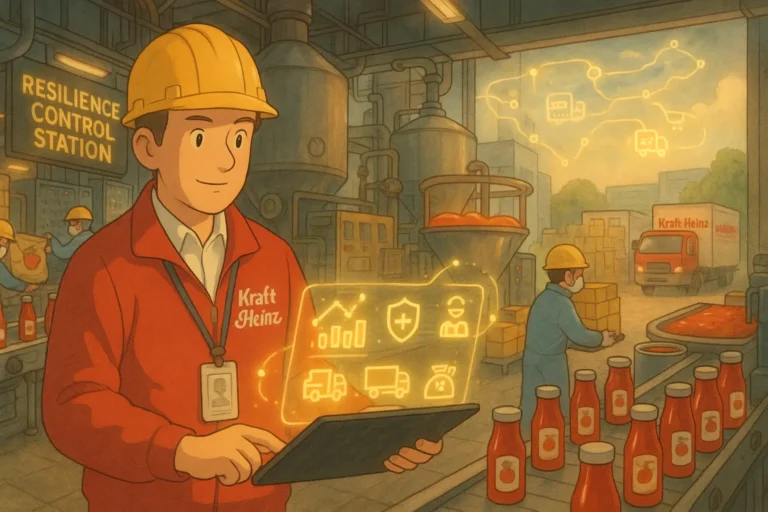
Supply chain downtimes are usually due to a ripple effect of a disruption or delay in the supply chain, which can also accrue losses.
Supply chain downtimes may be single-handedly the most concerning issue African supply chains face. It is a problem in any business or organization. However, the pressure intensifies where the supply chain is concerned.
The major problem with downtimes is that the supply chain loses money or revenue while draining available resources. For example, if goods are in a warehouse, the cost of holding the inventory for extended periods starts to show on the supply chain. If it is a manufacturing downtime, there is a drain on resources stagnating.
This study highlights how businesses, especially manufacturing businesses, lose over $250,000 per hour during downtime.
With downtimes having such a profound effect on the supply chain, how can we reduce them?
I have compiled a few tips to help you avoid supply chain downtimes.
1. Predictive Maintenance
It is common place for an equipment to break down. But, when they do, they can be highly disruptive, mainly because there are no ready replacements. Despite the common nature of equipment maintenance, it is one of those factors contributing to downtime that can be tackled easily.
To prevent the breakdown of equipment, organizations can invest in tracking the performance of their equipment to determine when they need maintenance. This investment goes a long way to containing or eliminating these breakdowns.
Preventive maintenance might look expensive initially, especially considering the constant tracking. But when compared to corrective maintenance and the potential disruptions it can cause, it ultimately pays for itself.
2. Multiple Vendors or Sourcing
Suppliers are necessary but the wrong type can be a contributor to downtimes in your supply chain. While supply chains tend to source much of their raw materials and services from a single supplier to reduce costs significantly, there is a risk of massive disruptions when these partners fail to deliver on promises.
Another issue with single modes of sourcing or partnerships is that supply chains tend to focus on globalization. This focus on globalization is primarily because it offers lower prices. However, globalization tends to open up many supply chain risks that could significantly disrupt the supply chain process.
Supply chains should diversify their supplier base to mitigate disruptions by getting multiple suppliers on board to bridge disruption gaps. The supply chains looking to source their products globally should foster partnerships with local suppliers.
3. Crisis Management Plan
Crisis management or contingency plans are great tools to limit or eliminate downtimes in the supply chain. Having a system in place for unplanned disruptions can go a long way in helping any organization effectively handle disturbances in the supply chain.
An example of such systems is logistic companies with extra vehicles or trucks on standby to help cargo movement when a vehicle or truck breaks down.
Another contingency plan example is manufacturing companies with standby generators or inverters. Which helps ensure the manufacturing process is not interrupted.
4. Train Supply Chain Employees
The people in your supply chain, that is your employees are one of its most important factors. So much so that an untrained employee can disrupt the supply chain, which would have ripple effects throughout the supply chain.
Some of these mistakes can include data entry for supply and demand, which could significantly set up the supply chain for disruptions leading to downtimes. Another example could be a worker making a mistake in the manufacturing process, which could severely affect production.
The idea is that employees are prone to errors in the workplace, especially when they are untrained or fatigued.
Regularly training your staff and having an effective HR would ensure they are well-versed in the supply chain or organizational practices. This will limit mistakes and improve efficiency in the workplace.
5. Automate The Supply Chain
Automating the supply chain process is another way to guide against supply chain downtimes.
Supply Chain Automation entails using technology to undertake supply chain processes seamlessly and efficiently. With automation, you get to reduce mistakes that can cause disruptions, eliminating the risk of downtimes.
Supply chain processes you can automate include sourcing, payment, fulfilment, and logistics.
6. Continuous Improvement of the Supply Chain Processes
Constantly reviewing the supply chain process helps supply chain managers and organizations identify potential weaknesses or risks in their supply chain management process.
But tweaking them for improvement is where the money is. Tweaking helps make the supply chain resilient despite external challenges or crises.
The world is constantly in motion; we just came out of the pandemic, and today, there is a war between Russia and Ukraine. China is threatening military exercises in Taiwan, and Israel is at war with Hamas.
Other activities that could affect your supply chain are local incidents, road construction, government policies, and security breaches.
All these are potential risks to any supply chain, especially a globalized supply chain management. Planning and analyzing their impacts on your supply chain would go a long way to prevent downtimes.
Conclusion
As the supply chain gets more complicated, the risk of supply chain downtimes becomes exponentially higher. Organizations can guide against such risk by being proactive in their supply chain planning and making significant investments or strategies to guide against unplanned disruptions leading to downtimes in the supply chain.

Obinabo Tochukwu Tabansi is a supply chain digital writer (Content writer & Ghostwriter) helping professionals and business owners across Africa learn from real-world supply chain wins and setbacks and apply proven strategies to their own operations. He also crafts social content for logistics and supply chain companies, turning their solutions and insights into engaging posts that drive visibility and trust.









6 thoughts on “6 tips for eliminating supply chain downtimes”